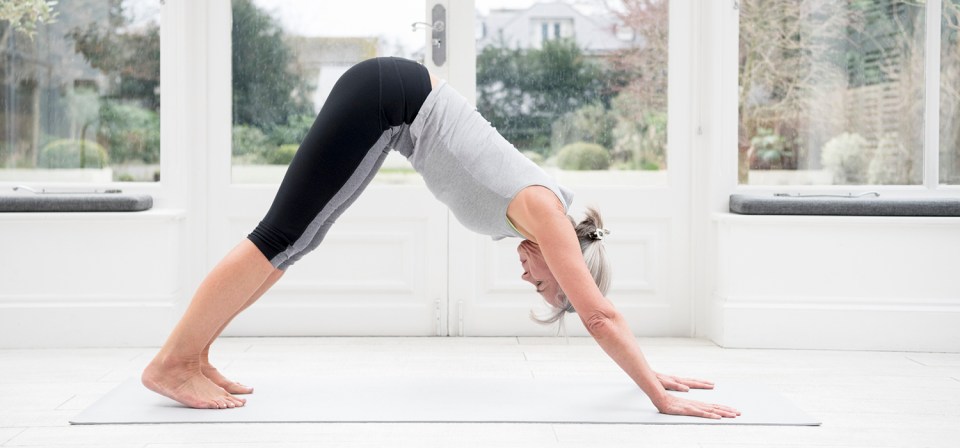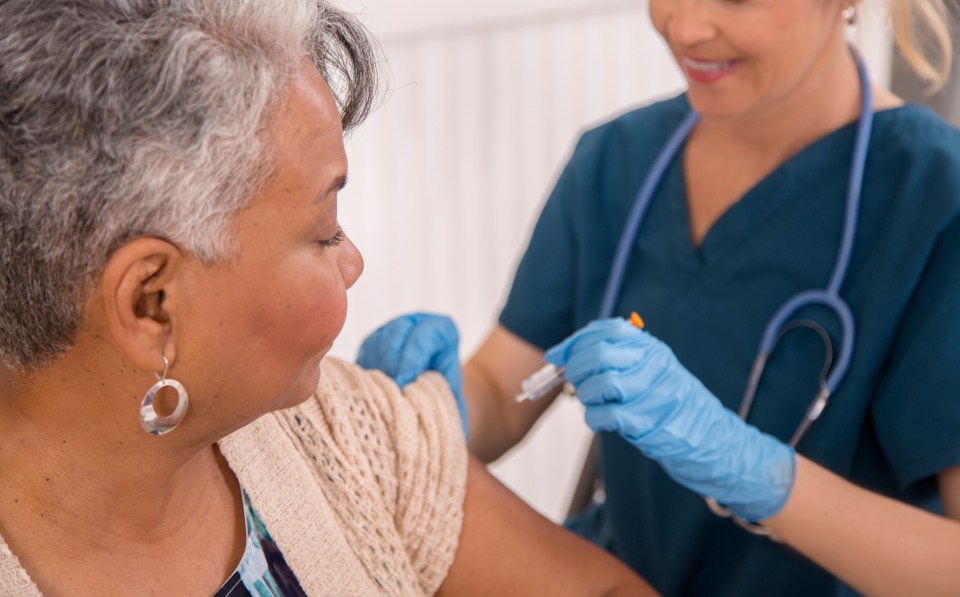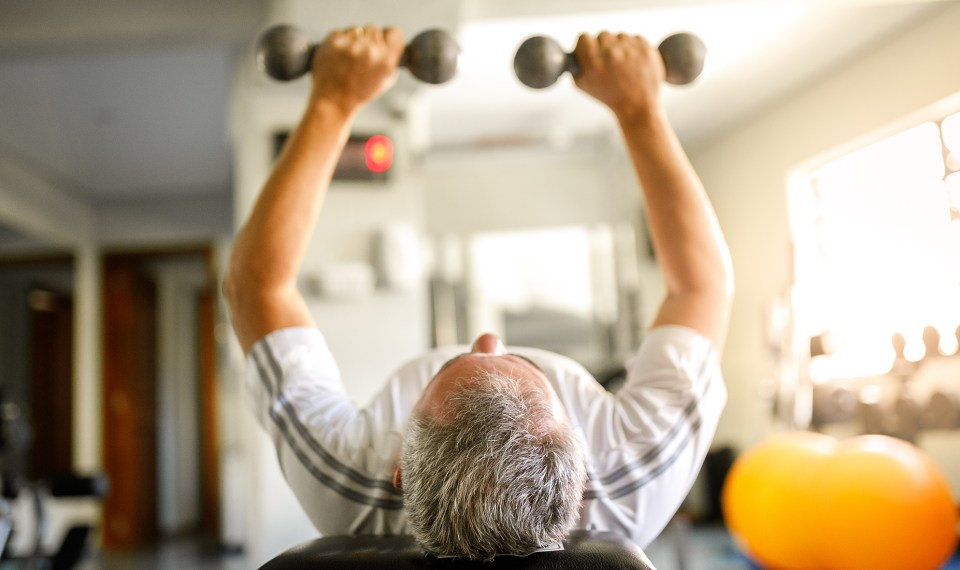Menopause occurs in women when the ovaries stop releasing eggs due to a drop in hormone levels. Symptoms include hot flashes, mood swings and memory problems, and these can sometimes be incapacitating. Sometimes doctors prescribe hormone replacement therapy to help with the symptoms. However, if women are looking for alternatives, yoga may just be their answer.
Building strength
One of the most common complications of menopause is weakened bones, or osteoporosis. Stress has also been associated with osteoporosis. The natural stress chemical produced in our bodies is called cortisol, which contributes to a loss of calcium and can interfere with bone growth. Yoga programs that include postures that are grounding, or weight bearing, help to maintain bone integrity and promote bone growth. Examples of grounding postures include downward facing dog and cat/cow positions. However, severe forward bends should be avoided for those with severely thinning bones or who have a history of vertebral fractures.
Besides bone loss during menopause, there can also be significant muscular atrophy, which affects posture and can increase the risk of falls and arthritic changes. Some standing and balancing yoga asana, or postures, such as the warrior series and tree pose can help increase body strength and muscle integrity.
Reducing stress
Meditation is an important component of a yoga practice and can address significant heart health issues. This part of the practice is designed to improve stress levels and lower blood pressure, both of which help lower your risk of a heart attack.
Grounding postures can also help reduce stress. These postures emphasize connecting to the “gravity of the earth” and “head out of the clouds,” which can steady emotions.
Using props such as blocks, bolsters and chairs are a must to move slowly and release so that you can “rest and unwind” into beneficial positions.
Relief from hot flashes
Forward bend positions help cool the body, so downward dog and wide-legged standing forward bends can help with hot flashes. Supportive props used at the head can facilitate more relaxation.
Supportive bridging (using a block or bolster under the sacrum) can also be powerful, while quieting the nervous system.
For an added benefit, all of these positions can be done in combination with a breath work practice called “Sithali breath,” in which you curl your tongue and slowly inhale through your mouth. This can be cooling and helpful during hot flashes.
Focusing on gratitude
Menopause can be a challenging time mentally and spiritually. For many women, in addition the physical symptoms, it also comes with depression and even grief. Yoga focuses on radical acceptance of the present and reinforces meeting challenges with gratitude. It is a practice that can benefit the whole person and help with the emotional challenges that come with menopause.
The content of this site is for informational purposes only and should not be taken as professional medical advice. Always seek the advice of your physician or other qualified healthcare provider with any questions you may have regarding any medical conditions or treatments.




